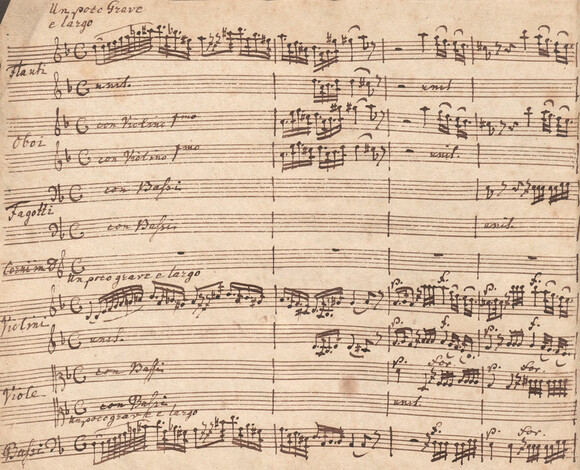Music
The music department of the Staatsbibliothek zu Berlin (Berlin State Library) (SBB) is one of the largest institutions of its kind in the world. The archives are unique in terms of subject, volume and density and are an inexhaustible fund of information for the branch of musicology focusing on primary sources. Parts of the large collection of music manuscripts, which includes the world's finest assembly of autographs by the Bach family, Ludwig van Beethoven, Wolfgang Amadeus Mozart, Felix Mendelssohn Bartholdy and Carl Maria von Weber, have world-heritage status.
The proposed project relates to a significant portion of the autograph archive, which contains approx. 10,000 shelf marks. The plan is to conduct research into the handwritten scripts dating from the 17th to mid-19th centuries and to register them in greater detail in the RISM/Kallisto database. The Kallisto documentation software was jointly developed by the SBB and RISM (Répertoire International des Sources Musicales). The metadata associated with the sources documented will then be made available on the RISM-OPAC system, accessible worldwide.
The project goes far beyond conventional methods of documenting and registering material. In the analysis of manuscripts there will be an emphasis on "Style of lettering", "Watermarks" and "Origin of Autographs", aspects that, in addition to their verbal descriptions, will also be visualised through the digitisation of watermarks and key, original, handwritten pages. The new thermography technology is being used for the digitisation of watermarks and the Library is collaborating with the DFG-funded "Watermarks Information System" (WZIS) project in evincing and storing the watermark images.
This work can be expected to reveal, among other things, inter-relations within the material under examination (and cross-references to other valuable stocks of material) that have important implications for the history of music. The results will help the researchers to arrange the works with respect to chronology and geography and to study how they were created, received and handed down to later generations. This will nourish and fertilise other areas of musicological research such as the history of performances given, the study of sources and notation, and also biography writing in particular and music historiography in general.
The proposed project is interested in fostering, with the help of the latest methods, the conditions in which work with the musical manuscripts on site takes place and improving the environment in which researchers in Berlin and further afield conduct their activities. It thus sets itself the aim of expanding the music department from a purely service-oriented library into a state-of-the-art research centre. In previous decades research into sources - the basis of that area of musicology which is concerned with history - was imported from the universities into specialised libraries such as the music department of the SBB. Now the inspiration and impulse is coming direct from the library.

